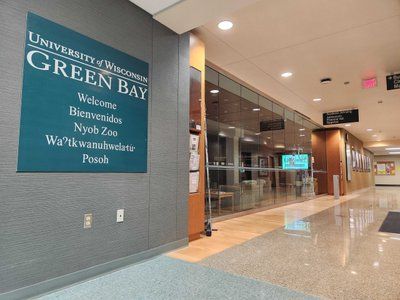By Tom Still
MADISON – This recession has spared no group of workers when it comes to losing jobs, with white-collar workers who seemed nearly immune to past economic downturns standing in unemployment lines with their blue-collar counterparts.
Still, there’s a clear “education gap” in the national jobless statistics – and it’s wide enough to buttress the commonly held belief that better educated workers are more likely to find work, earn a good wage and keep working when times get tough.
The gap should also reinforce efforts by Wisconsin policymakers and business leaders to support strategic ideas for building a better educated workforce, from K-12 programs that emphasize science, technology, engineering and math to targeted tax credits that can help older workers earn a college degree.
In February 2009, the U.S. Department of Labor reported that unemployment rates for people without high-school degrees was 12.6 percent, compared to 8.3 percent for those with a high-school degree only, 7 percent for those with some education after high school and 4.1 percent for those with a college degree.
Wisconsin ranks about 33rd among the 50 states in the percentage of adults with college degrees, well behind Minnesota (11th) and Illinois (15th). So perhaps it’s no coincidence that Wisconsin’s 9.4 percent jobless rate for March 2009 was higher than unemployment nationwide (9.0 percent), in Minnesota (8.2 percent) and in Illinois (7.3 percent).
Skeptics can make chicken-or-egg arguments all they want, but the fact is that “knowledge economy” businesses tend to cluster in cities and states where they can find workers who hold post-high school degrees. If you build the workforce, those businesses will come. Plus, knowledge-based businesses weather recessions better than most – which means workers at those companies tend to keep their jobs.
What can Wisconsin do to build a better-educated workforce? There are many ideas; here are two that have received recent attention.
Invest in a state Education Tax Credit – This bill would provide an incentive for employers to invest in expanding the number of people attending college in Wisconsin. It calls for a 25 percent employer tax credit (rising to 30 percent in areas where there are critical worker shortages) for tuition paid to a Wisconsin college or university. For every 25 or 30 cents in lost revenue to the state, employers would have contributed 70 to 75 cents toward educating either current workers or building tomorrow’s workforce. That investment yields higher tax revenues over time as the economy grows.
The bill allows “employers and Wisconsin citizens themselves, not government, (to) determine what fields of study will drive the economy,” said Rolf Wegenke, president of the Wisconsin Association of Independent Colleges and Universities. Testifying a few weeks ago to the Senate Economic Development Committee, Wegenke noted “government is ill-suited to make decisions about the kind of investments needed in education because it is difficult to predict exactly what kind of knowledge workers will be needed in the future… The Education Tax Credit lets the marketplace and the students decide.”
Improve what works in STEM education – The United States and Wisconsin have lagged the world in recent decades in producing science, technology, engineering and math graduates. And yet, those are among the skills valued most in the global economy. A report released April 21 by the non-partisan Wisconsin Technology Council capped a series of public meetings on “Educating a Tech-Savvy Workforce in Wisconsin” and urged embracing proven ways to engage students, teachers and businesses.
The report noted the success of programs such as Project Lead the Way, Science Olympiad and FIRST Robotics, which have private roots and have been adopted in a growing number of public schools because they capture the imagination of students at an early age. Among other ideas, the report recommended focused training opportunities for teachers and hands-on involvement of business leaders with schools, teachers and students.
These are just two examples of ideas to improve Wisconsin’s supply of “knowledge workers” over time. Pursuing these strategies and others won’t shorten this recession or stop the next one, but it will enhance economic security for Wisconsin and its workers.
Still is president of the Wisconsin Technology Council (www.wisconsintechnologycouncil.com). He is the former associate editor of the Wisconsin State Journal in Madison.
###





